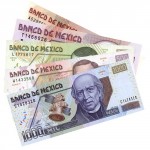Yesterdays trade saw GBP/USD within the range of 1.5266-1.5105. The pair closed at 1.5238, up 0.42% for the day, a fifth straight daily gain.
At 07:00 GMT today GBP/USD was down 0.04% for the day to trade at 1.5232. The cross held in a daily range between 1.5218 and 1.5254.
Fundamentals
United Kingdom
The preliminary estimate of United Kingdoms GDP probably showed that the economy expanded at a rate of 2.6% in the first quarter of 2015 compared to the same period a year ago. The British economy grew at an annualized rate of 3.0% in the fourth quarter of 2014, according to final data, following up on a downward-revised 2.6% in the third quarter. On a quarterly basis, the preliminary estimate of UK GDP probably will probably show 0.5% growth, following a 0.6% expansion during the preceding three months.
The GDP represents the total monetary value of all goods and services produced by the nation over a specific period of time. What is more, it is the widest indicator of economic activity in the country. The report on GDP is of huge importance for traders because they will look for higher rates of growth as a sign that interest rates may follow the same direction. Higher interest rates will usually attract more investors, willing to purchase assets in the UK which in turn will increase demand for the pound. Therefore, in case growth rate exceeded market expectations, this would provide support to the local currency. The Office for National Statistics is expected to release the preliminary GDP estimate at 08:30 GMT.
A separate report by the British Bankers’ Association (BBA) will likely show that the number of home loans in the United Kingdom probably increased to 37 900 in March from 37 300 a month earlier.
The BBA features the major banks in the country, which account for almost 60% of overall mortgage lending. The number of mortgage loans is considered as a leading indicator in regard to UK housing market conditions. As growth in mortgage lending signifies a healthy housing sector, which also contributes to overall economic activity, in case the number of loans rose more than projected, this would boost demand for the sterling. The BBA is to publish the official figure at 08:30 GMT.
United States
Confidence among consumers in the United States probably improved in April, with the corresponding index expected to come in at 102.5 from 101.3 in March. The gauge stood at 103.8 in January which was the highest since August 2007.
This indicator measures the level of individuals confidence in the US economic development. It is considered as a leading indicator, as it gives an early insight into consumer spending, which accounts for most of the nations GDP.
The index has 1985 as a base year, when the base value was 100. The Consumer Confidence Index (CCI) is calculated on the basis of a household survey which reflects consumers opinion on current conditions and future expectations regarding the US economy. Opinions on current conditions account for 40% of the index, while expectations of future conditions account for the remaining 60%. The surveys objective is to define consumer attitudes and buying intentions, while the data are filtered by age, income and region.
A sample of 5 000 households in the United States serves as a basis for the survey. Each month respondents give their opinion based on the answers to five questions: Current business conditions; Business conditions for the next six months; Current employment conditions; Employment conditions for the next six months; Total family income for the next six months. Respondents may answer each question as “positive”, “negative” or “neutral”.
Each of the five questions is given a “relative value”, or the positive responses are divided by the sum of the positive and negative responses. The relative value is then compared against each relative value from the base year (1985). The comparison of the relative values leads to the “index value” for all five questions. These index values are then averaged in order to form the value of the CCI.
In case the index rose more than anticipated, this would support the US dollar, as higher confidence suggests a better willingness to spend, and, respectively, accelerating economic growth. The Conference Board research group is to publish the official index reading at 14:00 GMT.
Also due today, Standard & Poors will release its S&P/Case-Shiller House Price Index, which measures the change in prices of single-family homes in 20 metropolitan areas across the US. The report serves as a gauge of the US housing markets health. According to preliminary estimates, the respective prices of homes probably rose by a seasonally-adjusted 0.8% on a monthly basis in February, compared to 0.9% a month earlier, while marking a 4.7% jump on an annual basis after a 4.6% increase in January.
Pivot points
According to Binary Tribune’s daily analysis, the pair’s central pivot point stands at 1.5203. In case it penetrates the first resistance level at 1.5301, it will encounter next resistance at 1.5364. If breached, upside movement may attempt to advance to 1.5462.
If the cross drops below its S1 level at 1.5140, it will next see support at 1.5042. If the second key support zone is breached, downward movement may extend to 1.4979.
In weekly terms, the central pivot point is at 1.5078. The three key resistance levels are as follows: R1 – 1.5302, R2 – 1.5416, R3 – 1.5640. The three key support levels are: S1 – 1.4964, S2 – 1.4740, S3 – 1.4626.





